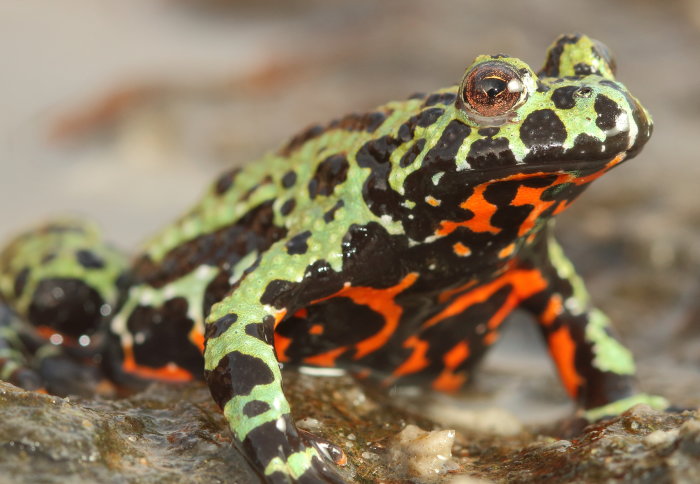Genetic clues reveal origins of killer fungus behind the ‘amphibian plague’
by Ryan O'Hare

A deadly fungus responsible for the devastation of amphibian populations around the world may have originated in East Asia, new research has found.
Batrachochytrium dendrobatidis (Bd), known as chytrid fungus, has long been identified as a cause of the decline and extinction of species of frogs, toads, newts and other amphibians across several continents.
Chytrid is distributed around the world but to date it has remained unclear where killer strains of the pathogen first emerged.
Now, new research published in the journal Science and led by researchers at Imperial College London alongside partners including ZSL (Zoological Society of London) and UCL, suggests the killer fungus currently ravaging global amphibian populations originated in East Asia.
The researchers highlight the need to tighten biosecurity across borders, including a potential ban on trade in amphibians as pets to ensure the survival of vulnerable species.

Dr Simon O’Hanlon, from the Department of Infectious Disease Epidemiology at Imperial and first author of the paper, said: “Biologists have known since the 1990s that Bd was behind the decline of many amphibian species, but until now we haven’t been able to identify exactly where it came from.”
“In our paper, we solve this problem and show that the lineage which has caused such devastation can be traced back to East Asia.”
Chytrid is passed from animal to animal and spreads rapidly in the wild, causing catastrophic mortality and declines in some species, while others are less affected.
The fungus causes a disease called chytridiomycosis, which attacks the animal’s skin, affecting their ability to regulate water and electrolyte levels and leading to heart failure.
In this latest study, an international team involving 38 institutions gathered samples of the pathogen from around the world. They sequenced the genomes of these samples, combining the data with genomes from previous Bd studies to make a collection of 234 samples.
Researchers analysed the data, looking at differences between the genomes. From the samples, they identified four main genetic lineages of the fungus, three of which are distributed globally. A fourth lineage was found only in Korea, on frogs native to the region.
Korean connection
Cultures from this Korean lineage were found to contain much more genetic diversity than any other lineage.
Deeper analysis of the Korean Bd showed no history of global outbreaks within their genomes suggesting the Korean chytrid strains were native to the region, and most closely resemble the ancestor of all modern Bd.

Using the genetic data, the team estimated when the killer strain of Bd currently plaguing amphibians diverged from its most recent common ancestor.
Their findings support the idea that rather than dating back thousands of years, as previously thought, the range of the disease expanded greatly between 50 and 120 years ago, coinciding with the rapid global expansion of intercontinental trade.
The team’s finding Asian strains of Bd in pet Oriental fire-bellied toads strongly supported this idea.
According to the researchers, human movement of amphibians – such as through the pet trade – has directly contributed to spreading the pathogen around the world.
They add that the paper provides strong evidence for a ban on trade in amphibians from Asia, due to the high risk associated with exporting previously unknown strains of chytrid out of this region.
The group also highlights the threat of another amphibian pathogen which has also emerged from Asia (B. salamandrivorans or BSal) affecting salamanders in Europe and whose spread is also linked with the global trade in pet amphibians from Asia.
Professor Matthew Fisher, from the School of Public Health at Imperial, said: “Our research not only points to East Asia as ground zero for this deadly fungal pathogen, but suggests we have only uncovered the tip of the iceberg of chytrid diversity in Asia. Therefore, until the ongoing trade in infected amphibians is halted, we will continue to put our irreplaceable global amphibian biodiversity recklessly at risk.”
The research was supported by funding from the National Environment Research Council.
Follow the team @ChytridCrisis @fisher_lab www.fisherlab.co.uk
-
‘Recent Asian origin of chytrid fungi causing global amphibian declines’ by Simon O’Hanlon et al, is published in Science.
Feature image: Captive Bombina orientalis imported to Europe from S.Korea. Photo by Frank Pasmans
Article text (excluding photos or graphics) © Imperial College London.
Photos and graphics subject to third party copyright used with permission or © Imperial College London.
Reporter
Ryan O'Hare
Communications Division




